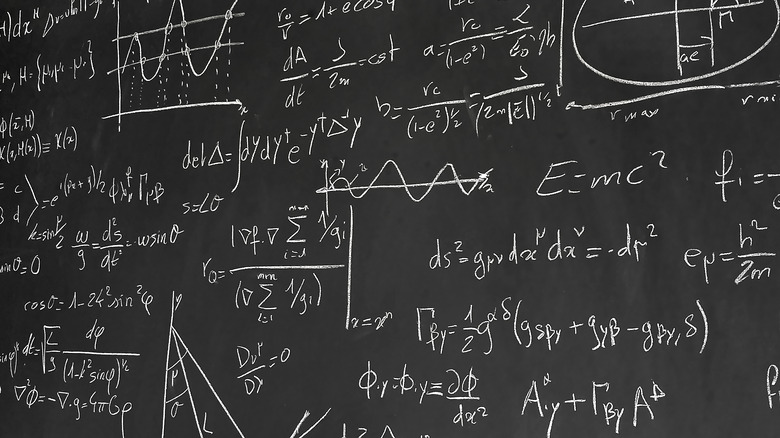How To Calculate E = MC2
It may not be obvious, but a blazing campfire relies on the principles contained in Einstein's famous equation, E = mc^2. This equation demonstrates the relationship between mass and energy. These two properties are interchangeable; if a system loses mass it must gain energy, and vice-versa. In the campfire example, the flames consume some of the mass of the wood, resulting in energy in the form of heat. Calculating E = mc^2 for any object tells you how much energy would result if the entire object disappeared.
Step 1
Weigh the object you will perform the calculation for with a mass balance scale. Record its mass.
Step 2
Convert the mass to kg, if necessary. To convert from g to kg, for example, divide by 1,000.
Step 3
Square the speed of light. The speed of light is approximately, 300,000,000 m per second; (300,000,000 m/s)^2 equals 90,000,000,000,000,000 meters squared per second squared, or 9 x 10^16 m^2/s^2.
Step 4
Multiply the result by the mass of the object in kilograms. If the mass is 0.1 kg, for example, (0.1 kg)(9 x 10^16 m^2/s^2) = 9 x 10^15 kgm^2/s^2.
Step 5
Record the result in Joules, the standard metric unit for energy. One Joule equals 1 kgm^2/s^2, so 9 x 10^15 kgm^2/s^2 equals 9 x 10^15 J.
Things Needed
- Mass balance scale
- Calculator
TL;DR (Too Long; Didn't Read)
Convert the result to kilojoules — abbreviated as kJ — by dividing by 1,000. The accurate speed of light is 299.792.458 m per second.
References
- SLAC National Accelerator Laboratory; Special Relativity; June 2009
- "Chemical Principles"; Steven Zumdahl; 2007
Cite This Article
MLA
Wakefield, Petra. "How To Calculate E = MC2" sciencing.com, https://www.sciencing.com/calculate-mc2-8208976/. 12 April 2011.
APA
Wakefield, Petra. (2011, April 12). How To Calculate E = MC2. sciencing.com. Retrieved from https://www.sciencing.com/calculate-mc2-8208976/
Chicago
Wakefield, Petra. How To Calculate E = MC2 last modified March 24, 2022. https://www.sciencing.com/calculate-mc2-8208976/
